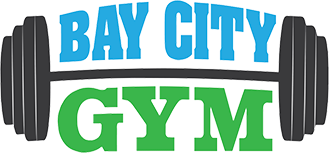While exercise injuries are common to people starting out, there are seven simple things you remember to help avoid them.
1. Warm-Up Before Exercise
It’s not unusual for people to jump straight into weight training or a treadmill run without stretching or getting their muscles warmed up. Even if you’re in excellent health, your muscles and tendons will be tight when you first get to the gym. If you don’t warm-up, you will risk injury if you overextend accidentally or twist a joint the wrong way. Proper warm-up goes a long way in preventing this and does not require more than a little stretching, walking, and working the muscles with low weights or resistance bands
2. Get a Personal Trainer
If you don’t know where to begin, get a personal trainer who can get you started safely and help you structure a fitness plan based on a clear set of goals, such as muscle building, weight loss, and aerobic fitness. A qualified trainer can help you avoid many bad habits that affect even the best of athletes, this will allow you to concentrate on form rather than weight to achieve great results. A couple of hour-long sessions may be all that you need.
3. Start Slow and Increase Gradually
When starting out, it is usual for people to throw themselves into training with such intensity that is not only unsustainable but is also harmful. You should start with the moderate exercise of about 20 minutes thrice a week and gradually build on this baseline week by week. You can also determine your baseline intensity level when you use a system called the perceived exertion scale that will gauge your physiological response to exercise.
4. Fuel the Tank
You are going to be burning calories and building a sweat while exercising, so do not go in with an empty tank! Eat two hours before with the right foods so that you can ensure you have ample fuel for a workout. If you work out in the morning before breakfast, which is a great way to burn fat then ensure that the previous day’s meals were full of nutrition. A take away meal the night before will leave the body low in energy the next day. The same principle applies to hydration. Try to drink 500ml of water two hours before working out and make sure to take additional sips of water throughout to replace any lost fluids.
5. Always Dress for Your Sport
A lot of sports injuries occur because of the lack of proper equipment, and this includes clothes and shoes. Whichever activity you will engage in, be sure that you have the clothing and footwear appropriate to that sport. There’s a reason why biking shorts are padded, or why certain clothes are designed to wick sweat. You don’t need to spend a fortune to get the best brand, just get something that provides enough protection against impact, strain, and overheating. If you’re not sure what to get, talk to your trainer who can point you in the right direction.
6. Listen to Your Body
“No pain, no gain” is probably the worst fitness mantra ever created. While a workout can be hard, it should never cause you pain. If you feel any pain, like a cramp or a sudden tweak, slow down and back off – give it a rest. Lower your weights or try to move to another muscle group. Wait until your body is better equipped to handle the stress.
If you are sick with like a cold or flu, don’t try to place additional stress on your body. Exercise triggers an immune response since your muscles are taxed by exercise. If your immune system is already low, you will make yourself sicker by working out. Remember that in the end, overtraining can be just as harmful to your body as to when you do not train enough. Always treat your body kindly, and let it rest when it asks you to.
7. Have Routine Physical
It’s a good idea to see your doctor for a Fitness test before starting any exercise program. Any new activity can put stress on your body, especially on your joints and cardiovascular system. Take for example, a six-minute treadmill test will help you determine the limitations that you can place on your heart and help you direct the appropriate exercise routine based on your cardiovascular fitness.


